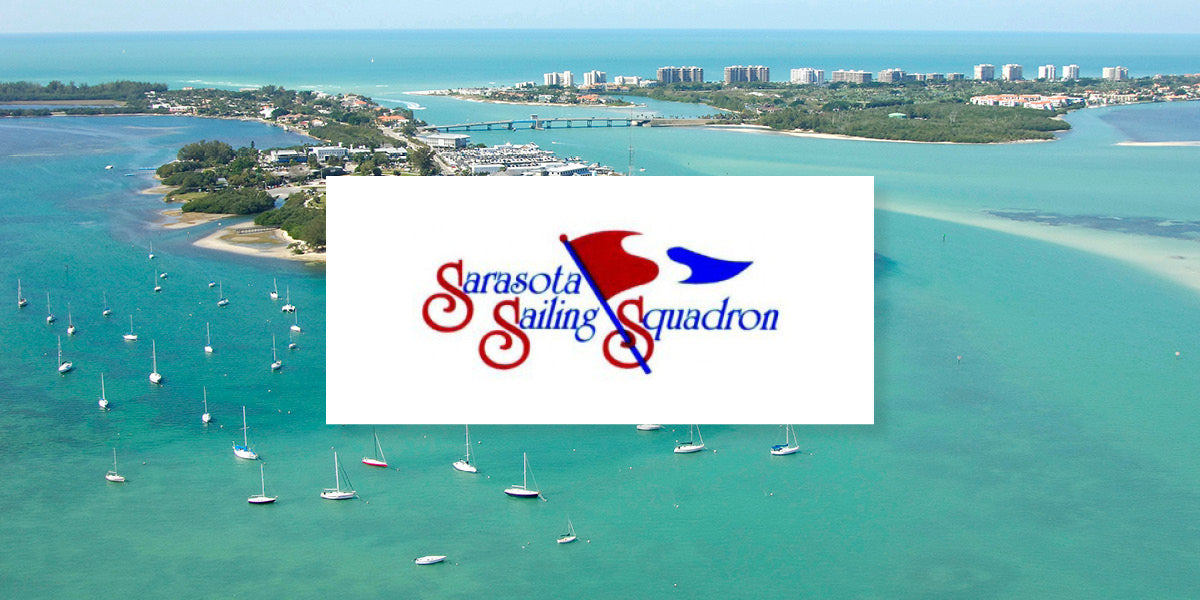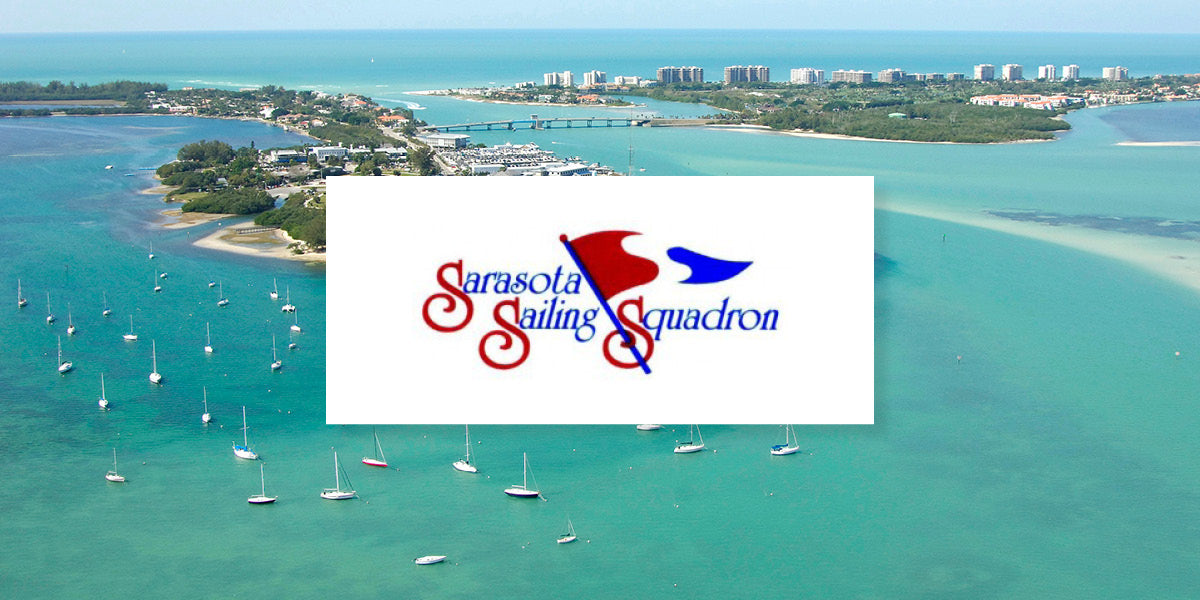SARASOTA BAY: LOCAL KNOWLEDGE IS KEY
SARASOTA BAY: LOCAL KNOWLEDGE IS KEY
Vipers And VX One Winter Series

Sarasota Bay has to be one of the most beautiful places to sail in the country. Its gorgeous blues and greens reflect off the sandy white bottom and a warm salty splash is always refreshing. Perhaps the only thing more heartwarming than leaving the Sarasota Sailing Squadron is the return back to the dock, where you’re always greeted with a cold beverage, a smile, and story from another sailing enthusiast. It’s no wonder why the Squadron’s racing calendar is constantly booked.
This venue also delivers a challenging race track that keeps every tactician on their toes! The geography and weather patterns can provide just about every type of racing condition imaginable. A three day regatta might have 50 degrees temps and 25 knots from the north one day, a 3-12 knot easterly and 40 degree wind shifts the next day, and finish off with a building 8-15 knot sea breeze from the northwest. Perhaps the only people scratching their heads more than the tacticians are the PROs that have the pleasure of running our races!
I learned to race on the Sarasota Bay when I was 9 years old and I’m very fortunate to get to return to my home waters quite often. I’ve been on both the right and wrong end of the Bay’s challenges, so here are some trends I’ve noticed along the way.
Sea Breeze Day
The sea breeze has a tendency to influence the gradient any time temperatures ashore get over about 80 degrees. If there is no other weather system in the area and the day is supposed to get that warm, you can fairly reliably look for a light easterly (often with a bit of south in it) when you arrive at the Squadron in the morning.
Hopefully our PRO is reading this, because with this scenario there is really only one thing to do: POSTPONE! This morning easterly will pump in and out and shift slowly south as it dies. Keep an eye over the Van Wezel (it’s purple – you can’t miss it!) and look for puffy clouds to will build up until about 12:30pm. By 1:00 – 1:30, the easterly will have given up, and—as fast as you can snap your finger—the WNW sea breeze will make its grand entrance off the shores of Longboat Key. Now we’re in for a beautiful afternoon of racing.
The sea breeze is fairly steady, but as the weather mark gets closer to Longboat Key the land can create 10 degree shifts. Shortly after the sea breeze comes in, look for more velocity on the right side of the race course. Make sure you play shifts to get over there, and then look for opportunities back to the top left closer to land. Later in the day, the pressure tends to even out and you start seeing more gains on the top left. But be careful, because if the course is too close to Longboat Key, the holes get bigger and bigger and you can get hung out to dry if you go too far left. On the downwind legs, try to keep an eye on the puffs settling in off the Key.
Cold Front Day
Any decent weather forecast will typically predict these a long time out. Unlike Miami, Sarasota occasionally gets hit with the big winter cold fronts that sweep across our country. Often these fronts pass through overnight (tie your boats down!) and we are greeted the next morning with a few inches of rain, temperatures in the 40s, and a NNW breeze that might be gusting over 30 knots. If the breeze does settle down enough to go racing, plan on shallower water because the wind will have blown a lot of water out of Big Pass (the Southern exit of the bay, near Siesta Key). This means “lots of sheep” as a popular class member likes to put it… steep chop to the rest of us. Plan on exercising your bailing arm and your hiking muscles as these days can be pretty full on. The wind is generally pretty steady, so it’s usually about starting at the favored end and minimizing tacks. The top priorities are boat speed and boat handling.
Strong Easterly
It’s fairly common in the spring to have an easterly breeze strong enough that it’s not affected by the sea breeze. It will often start out around 15 knots in the morning and die down to around 5 knots by the end of the day. This is the most dynamic condition on Sarasota Bay; the shifts and puffs are quite large and not always predictable. Get on the long tack early, and stay on it as long as you can. Point your boat at the mark, even if you have to sacrifice clean air to stay on the lifted tack. You can’t afford to sail away from the big shifts. Many times, it seems there is a left shift near the bottom of the course, a right shift in the middle, and a big left shift again at the top. But nothing can be counted as rock solid in this condition!
Before the start, look up the course and try to start where you think the most pressure will be. From there, get on the lifted tack ASAP. Coming into the weather mark, decide what the shift is and get on the correct jibe right away as well. There’s a lot to be gained and lost there.
Southerly
It’s rare, but every now and then we get strong south breeze. In fact, last year’s final day of racing at the Midwinters was blown out by a building southerly. More often, when the breeze comes from the south it is lighter and more variable, often with big shifts and pressure from course right as the sea breeze endeavors to have its way. In a southerly less than 12 knots, my money’s on the right side of the course because it generally marches over to the right in a typical “clocking” fashion (with smaller “backs” to the left throughout the process). Early in the day it’s common to see huge right shifts with velocity, but as the direction works right the breeze settles in from the SW and the big shifts become less dramatic. The right seems more reliable, but it’s still possible to play the shifts on the left for a nice gain. Keep reading the water for velocity, and play the compass numbers above all else.
There are some good rules of thumb that may help out when racing on Sarasota Bay, but this venue has stumped me plenty of times—even when I think I have a good idea of what’s going on! That is why the racing is so fun here—everyone has to be ready for anything!



























